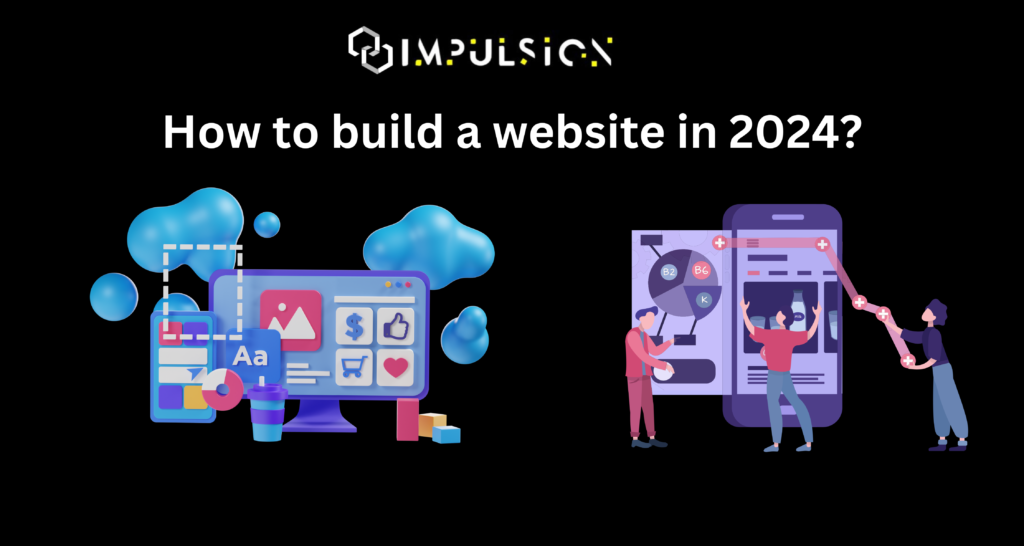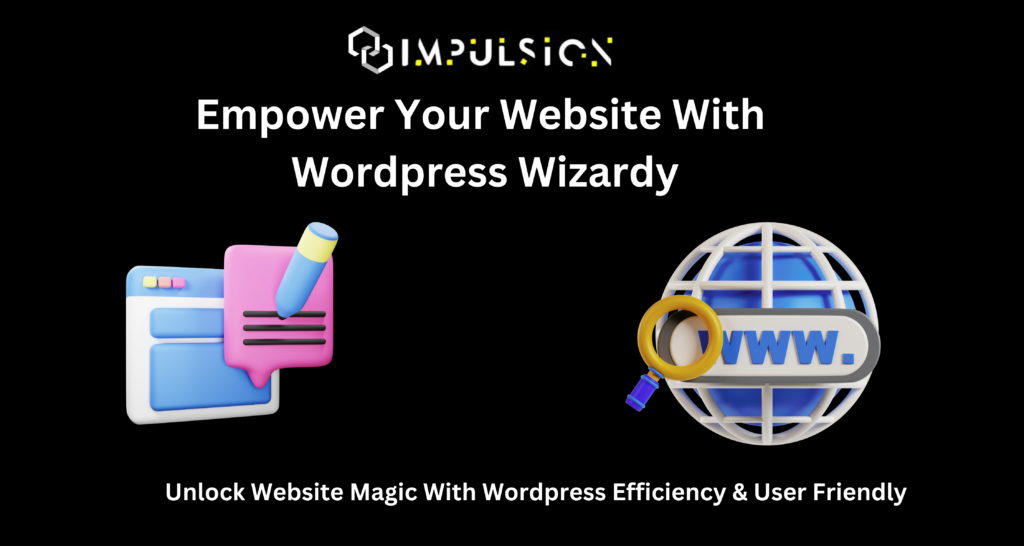How to Build a Website in 2024: A Comprehensive Guide for Beginners

Let’s explore something exciting: creating your website. Today, having your own internet space is key. No matter if you’re in business, freelancing, or passionate about hobbies, a website is your digital stage. It’s where you showcase yourself, sell products, or share passions. And in 2024, making a website is easy. With many tools and platforms, the process is pretty simple. Planning to build a website? You’re in luck. I’ll guide you every step of the way. Together, we’ll create a website you’ll be proud of. Ready to start? Let’s go!
Step 1: Define Your Purpose
First, let’s discuss your website’s core. What’s your goal? think whether it’s selling, displaying your work, or sharing a passion, knowing your mission is crucial. It guides your design, content, and platform choice.
Step 2: Choose Where Your Website Lives
Next, it’s time to pick your website’s platform. Options range from CMS like WordPress to builders like Wix and Squarespace. Each presenta different features. Consider your tech comfort level, budget, and needed tools.
WordPress: Ideal for those who want full control over their website’s customization. It’s perfect for blogs, portfolios, and e-commerce sites.
Wix and Squarespace: Great for beginners who prefer drag-and-drop interfaces for easy website creation.
Shopify: The go-to platform for e-commerce websites, offering powerful tools to sell products online.
Step 3: Pick a Domain Name and Hosting
Your domain name is your website’s address on the internet, while hosting is where your website’s files are stored. Choosing a memorable domain name is crucial for brand recognition. When it comes to hosting, look for providers that offer reliability, fast loading times, and customer support. Many platforms, like Wix and Squarespace, offer integrated hosting solutions, simplifying this step for beginners.
Step 4: Design Your Website
Designing your website involves planning its layout, choosing colors, fonts, and images that align with your brand identity. If you’re using a CMS like WordPress, you can choose from thousands of themes that dictate your website’s look and feel. For those on website builders, utilize the drag-and-drop tools to customize your site’s design. Remember, your website’s design should prioritize user experience, ensuring it’s easy to navigate and accessible on both desktop and mobile devices.
Step 5: Add Content
Content is the heart of your website. Depending on your site’s purpose, your content might include product descriptions, blog posts, portfolios, or company information. Make sure your content is engaging, informative, and optimized for search engines (SEO) to improve your website’s visibility online. Use relevant keywords, meta descriptions, and headings to help your site rank higher in search results.
Step 6: Optimize for SEO
SEO optimization is crucial for increasing your website’s visibility in search engine results. In addition to content optimization, consider other SEO strategies like improving your site’s loading speed, ensuring it’s mobile-friendly, and securing it with HTTPS. Also, create a sitemap and submit it to search engines to help them crawl and index your website more effectively.
Step 7: Launch and Promote Your Website
Once you’ve designed your website, added content, and optimized for SEO, it’s time to launch. Announce your website’s launch through social media, email newsletters, and other marketing channels to drive traffic. Consider utilizing online advertising, engaging with your audience through social media, and employing content marketing strategies to further promote your website.
Step 8: Analyze and Improve
After launching your website, use tools like Google Analytics to track your site’s performance. Analyze metrics such as visitor behavior, traffic sources, and conversion rates to understand what’s working and what needs improvement. Continuously updating your content, optimizing for SEO, and refining your marketing strategies will help you achieve your website’s goals.

How to use WordPress?
- Choose a Domain Name: Select a unique, memorable domain name that reflects your brand or website purpose.
- Select a Hosting Provider: Choose a reliable hosting service that offers WordPress support and guarantees uptime.
- Install WordPress: Utilize your hosting provider’s one-click WordPress installation feature or manually install WordPress.
- Pick a WordPress Theme: Choose a theme that suits your website’s style and purpose, focusing on responsiveness and customization options.
- Customize Your Theme: Tailor the theme to your needs by adjusting colors, fonts, and layouts and adding your logo.
- Add Essential Plugins: Enhance functionality with plugins for SEO, security, social media integration, and more.
- Create Key Pages: Build fundamental pages like Home, About, Services/Products, Contact, and Blog.
- Optimize for SEO: Use SEO plugins and best practices to improve your site’s visibility in search engine results.
- Ensure Mobile Responsiveness: Make sure your site looks great and functions well on all devices.
- Regularly Update Content: Keep your site fresh and engaging with regular updates and new content.
- Secure Your Website: Implement security measures like SSL, backups, and plugins to protect your site.
- Monitor Site Performance: Use tools to track site speed, user engagement, and overall performance for continuous improvement.
- Connect with Your Audience: Use comment sections, forums, or social media integration to connect with visitors.
- Perform Regular Maintenance: Regularly update WordPress, themes, and plugins to ensure optimal performance and security.
- Analyze & Adapt: Utilize analytics to understand your audience and adapt your content and strategy accordingly.
Wix: Helps you carve a smooth website
Wix is an easy-to-use tool that makes creating a website simple. It has a drag-and-drop feature, a wide range of templates, and powerful design options. This terrific tool helps you build a professional website quickly and effortlessly, whether for business or personal use.
How to use Wix?

- Sign Up for Wix: Create an account on Wix.com to get started.
- Choose a Template: Select from hundreds of customizable templates that fit your website’s purpose and style.
- Customize the Design: Use the drag-and-drop editor to tailor the layout, colors, fonts, and graphics to match your brand.
- Add Your Content: Insert text, images, videos, and other media to make the website informative and engaging.
- Integrate Apps: Enhance functionality with Wix apps for e-commerce, social media, email marketing, and more.
- Optimize for SEO: Utilize Wix’s built-in SEO tools to improve your website’s visibility in search engine results.
- Make it Mobile-Friendly: Ensure your site looks great on all devices with Wix’s mobile editor.
- Set Up a Domain: Choose and connect a custom domain name to establish a professional online presence.
- Preview and Test: Regularly preview your site to test functionality and user experience across different devices.
- Publish Your Site: Once satisfied, hit the publish button to make your Wix website live.
- Analyze Performance: Use Wix Analytics to monitor traffic and user behavior for insights and improvements.
- Update Regularly: Keep your site fresh and up-to-date with regular content updates and feature enhancements.
- Engage with Visitors: Add contact forms, live chat, or comment sections to interact with your audience.
- Market Your Website: Leverage Wix’s marketing tools for email campaigns and social media integration to attract more visitors.
Wrapping it up
Building a website in 2024 is an exciting journey that requires careful planning, design, and promotion. By following these steps, you’ll be well on your way to creating a successful online presence. Remember, building a website is an ongoing process that involves regular updates and optimization to stay relevant and engage your audience effectively.
 Exciting news! Get 15% off on digital marketing services
Exciting news! Get 15% off on digital marketing services